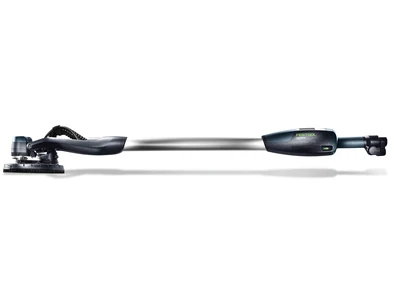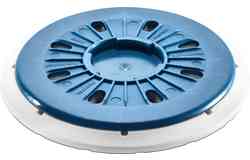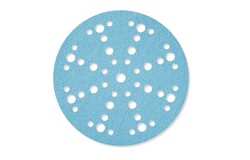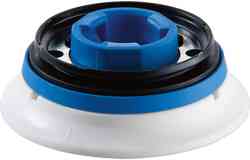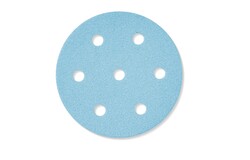Sanding Plexiglas edges

Description
Cutting Plexiglas to size results in a rough-sawn, milky-white cutting edge. However, if the cutting edges are intended to be visible when finished, the surface needs to be free of scratches. This guide shows you how you can use the ROTEX to sand Plexiglas edges to be scratch-free.
The "Polishing Plexiglas and smoothing cutting edges" guide shows you how you can sand and polish cutting edges in acrylic to a shine using the ROTEX.
Note:
When sanding Plexiglas, always work with a dust extractor with antistatic discharge. This prevents the sanding discs from quickly becoming clogged and protects the user from the danger of breathing in hazardous fine dust.
Tools/accessories
Alternative tools
Preparation/set-up
-
To sand acrylic, first attach the FastFix sanding pad with the GRANAT abrasive to the ROTEX.
For fine sanding of Plexiglas, set the ROTEX to speed level 6.
Procedure
-
Conventional procedure: Complex, laborious and time-consuming sanding by hand.
Problem:
- Mechanical processing using angle grinders involves a risk of the surface overheating.
- The water absorption of acrylic glass increases as the temperature rises. The effects of temperatures over 40 °C can cause a milky-white discolouration in the acrylic glass.
- This can be eliminated via air or oven drying, provided that the material was not subject to any significant excess strain.

-
Using the ROTEX and appropriate system accessories, the problem outlined above can be solved quickly, cleanly and without overheating problems using the following process:
- First sand the Plexiglas using the GRANAT P400 abrasive until no more saw scratches are visible.
- Then wipe down the edge with a microfibre polishing cloth.
- Then position the GRANAT P800 abrasive onto the sanding pad and sand the edge on the acrylic glass.
- Then wipe down the edge with a microfibre polishing cloth again.
- Then repeat the above process with the GRANAT P1200.
- A matt sanding area will now be visible, and is removed via polishing.
Edge trimming:
If the cutting edges are too thin (material thickness of less than 10 mm), it may be possible to strip away the surface with a scraper or the sharpened back of a hacksaw blade, pair of scissors, knife or similar tool.
-
Our illustrated guides and work results are documented working steps that we have performed in practice. They are individual examples and do not guarantee or promise that users will obtain the same results. The results will depend on the user's experience and skill, as well as the material being used. Illustrated guides do not replace any Festool operating manuals and/or safety instructions. Liability for ensuring that the information, instructions and applications are free from content defects and defects of title, in particular with regard to the absence of defects, correctness, freedom from third party intellectual property rights and copyrights, completeness and fitness for purpose, is excluded. Claims for damages made by the user, regardless of their legal basis, are excluded. These liability exclusions are not applicable if the damage was intentional or caused by gross negligence, or in cases of statutory liability.
We cannot accept liability for damage resulting from defects.↑




















